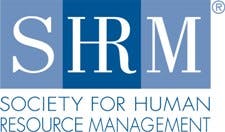A SHRM task force is readying what could become the first U.S. standard for calculating “Cost Per Hire.”
A draft standard is currently circulating among members of SHRM’s Staffing and Workforce Planning group (you can see it here). Eventually, after the comments have been reviewed and any issues that turn up get resolved, the proposal will be submitted to the American National Standards Institute.
The ANSI describes itself as “the voice of the U.S. standards and conformity assessment system,” and says its mandate is to oversee “the creation, promulgation and use of thousands of norms and guidelines that directly impact businesses in nearly every sector.”
Once in the hands of ANSI, the proposal will go through a review and a public comment period before becoming an official standard. When that happens, employers conforming to the standard will have confidence that they are comparing apples to apples. Equally important is that as the number of HR standards grow — and SHRM is already working on others — HR will join other business units in having a uniform set of metrics by which to measure and be measured.
How the standard would work
The Cost Per Hire standard itself is fairly straightforward. Chances are you already are taking into account all or most of the elements the draft standard says you should. In that case, the standard validates your process. It also will serve as a checklist to make sure you’re not missing anything.
For instance, you’re probably tracking all your direct hiring costs such as the job posting, resume searching, and candidate travel, but how about accounting for a share of the office expenses? The proposed standard calls it an indirect cost and says office expenses include “a representative portion of rent, capital expenses, and incidentals incurred while supporting the recruitment function.”
If your financial reporting system already has those costs broken out, then including them in the Cost Per Hire calculation is easy. If not, the proposed standard allows you to “take a percentage of overall office costs based on recruiting headcount.” As the standard notes, “If exact data on these expenses (is available), then that data should be used.”
By encouraging the use of exact data, the standard lends its weight to HR requests for changes in financial accounting. But, it also provides some flexibility. The document itself notes, “100 percent accuracy in content and scope is not required for a valid Cost Per Hire statistic.”
Three Cost Per Hire metrics
As task force member and Aspen Search Advisors founder Andrew Gadomski observed, “We went to the financial community and asked CFOs (to review the proposal)… They did poke holes in it , which we discussed and worked out… We tried to accommodate the different financial issues.”
The task force actually developed three metrics for Cost Per Hire. There’s a standard for determining “Cost Per Hire Internal,” which includes a few more costs, principally for hiring manager time and recruiter training, than does “Cost Per Hire Comparable,” which excludes some costs, principally the hiring manager time. The purpose of the “Comparable” standard is to permit apples to apples comparison within an industry and across industries.
Finally, there’s a “Recruiting Cost Ratio,” which compares recruiting costs to total first year compensation of all the hires made during the sample period. The point of this standard is to offer a formula that “normalizes recruiting costs based on compensation as a proxy for the relative value of the new hire to the firm.”
The task force also addressed the need for companies to look at Cost Per Hire in a variety of ways. The standards document details multiple methods for segmenting the data so a company could compare CPH across divisions or geographies, or by recruiter, or in other ways.
Detailed criteria for campus hires
It also goes into considerable detail about campus hires, and offers a time period for when a graduate is no longer to be considered a full-time campus hire — when they start work more than 12 months after getting their degree or have worked, full-time, for more than a month in their chosen (degree) profession.
In 2009 SHRM was designated a standards developer by the American National Standards Institute. That gave the organization the right to develop standards in the HR profession, pursuant to ANSI requirements, and have those standards reviewed and endorsed as a U.S. national standard.
SHRM then formed the Staffing and Workforce Planning group, which started work on the Cost Per Hire standard, and others, including one dealing with job descriptions. In August, SHRM announced it was forming two more task forces: Standard for Measures and Metrics and the Standard for Diversity and Inclusion.
The ramifications of SHRM’s work may go well beyond the U.S. In July, at SHRM’s urging, ANSI posted a draft of a petition to the International Organization for Standardization (ISO) to create a new field of ISO work for “human resource management.”
Lee Webster, SHRM’s director of HR Standards, was traveling and not available to discuss the program for this story.
